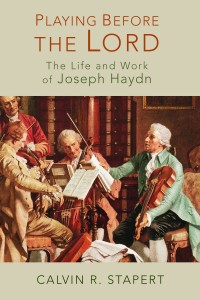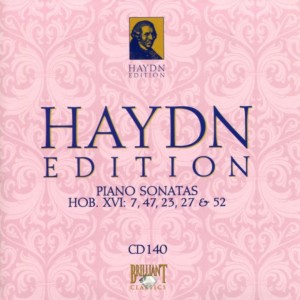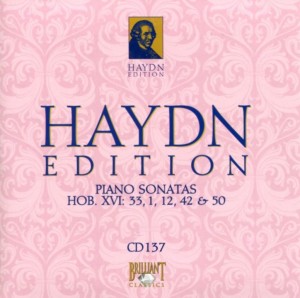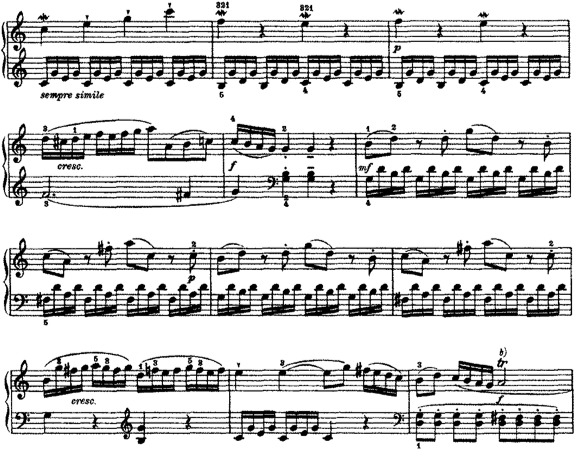 Today’s CD features five more Piano Sonatas performed by Ursula Dutschler on fortepiano.
Today’s CD features five more Piano Sonatas performed by Ursula Dutschler on fortepiano.
Whereas I didn’t dig yesterday’s compositions and/or performances, I find today’s more enjoyable.
They are much more lively and robust than yesterday’s fare.
I’m sure it helped that Movement I (“Moderato”) of Piano Sonata in C (“Divertimento”) HOB XVI: 10 was a much livelier moderato than I’ve heard before, and the construction of the piece was more intricate. So it was a brisk, commanding way to open the CD.
Movement II (“Menuet”) was also more intricate and lively than other menuets to which I’ve listened.
Movement III (“Finale: Menuetto”) was a fine way to round out this sonata.
Very enjoyable.
 I’d like to interrupt this report with news of my discovery of a just-published book called Playing Before the Lord: The Life and Work of Joseph Haydn by Calvin R. Stapert, professor emeritus of music at Calvin College.
I’d like to interrupt this report with news of my discovery of a just-published book called Playing Before the Lord: The Life and Work of Joseph Haydn by Calvin R. Stapert, professor emeritus of music at Calvin College.
Stapert writes with great love for the subject matter, and unabashedly admits so in his Preface:
You will not have to read very far – in fact you have probably read far enough already – to realize that I love Haydn and think he belongs very near the top of any list of greatest composers…if I am bothered that Haydn’s stock has slipped since the days when he was widely recognized as Europe’s greatest living composer, it is not for his sake. Though at one time it mattered quite a bit to him, he has no such concerns anymore. But it does matter to me.
Stapert’s respect for the subject matter infuses every word of this volume. I wholeheartedly recommend it.
Now, back to my assessment of today’s music.
Movement I (“Allegro”) Continue reading →






